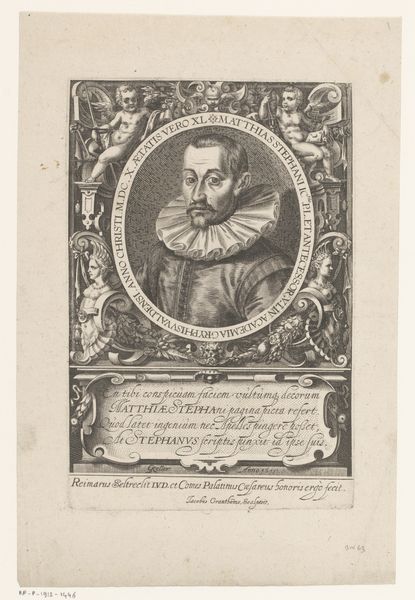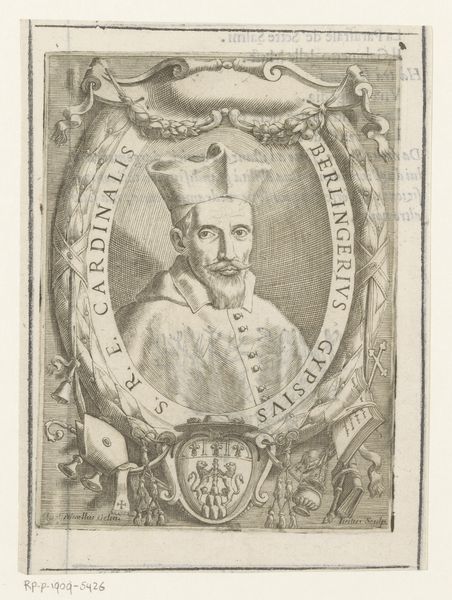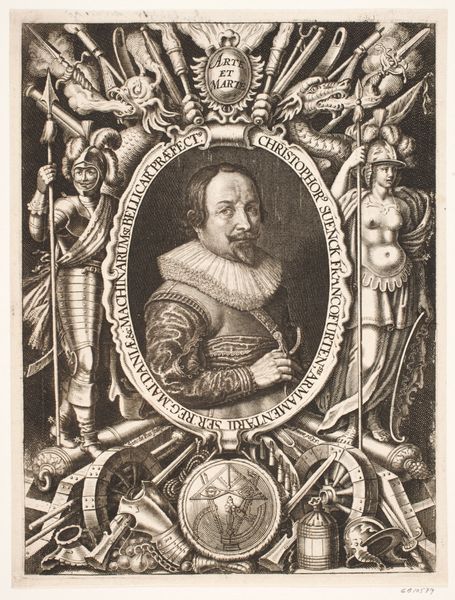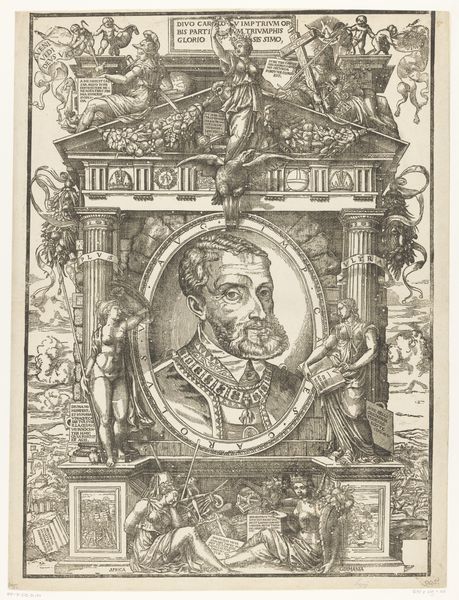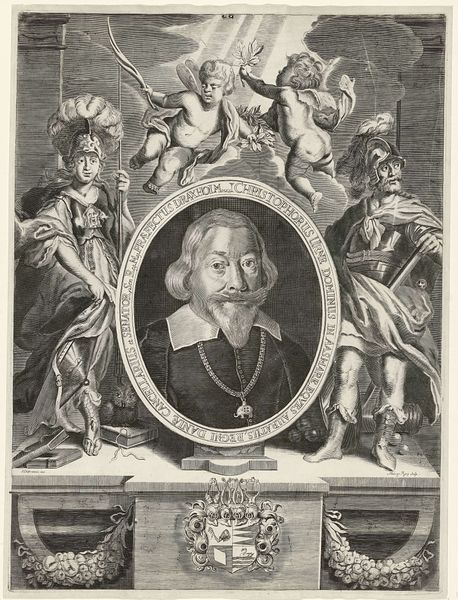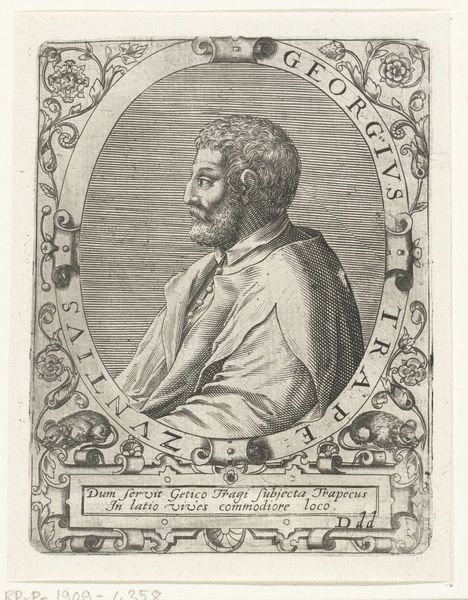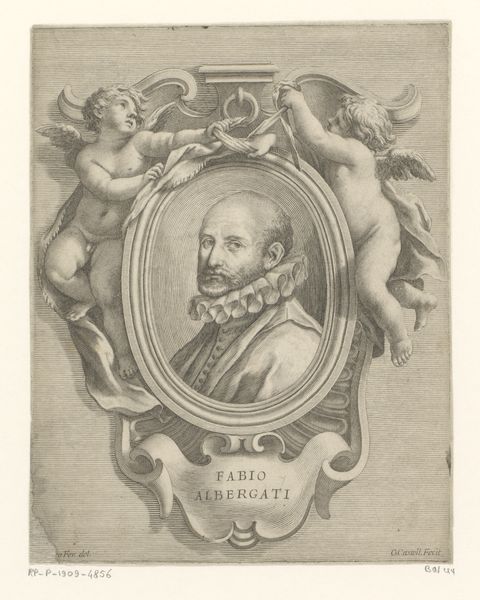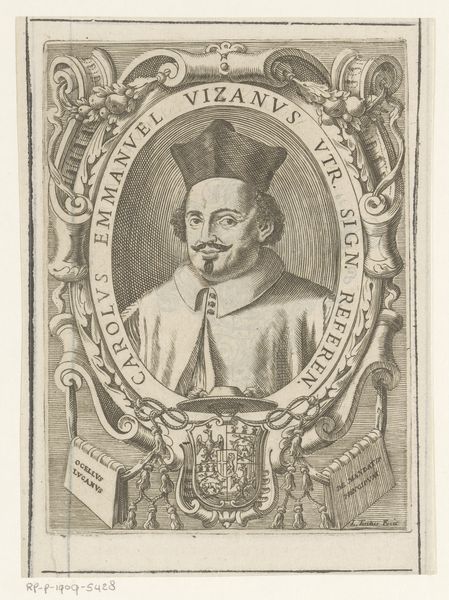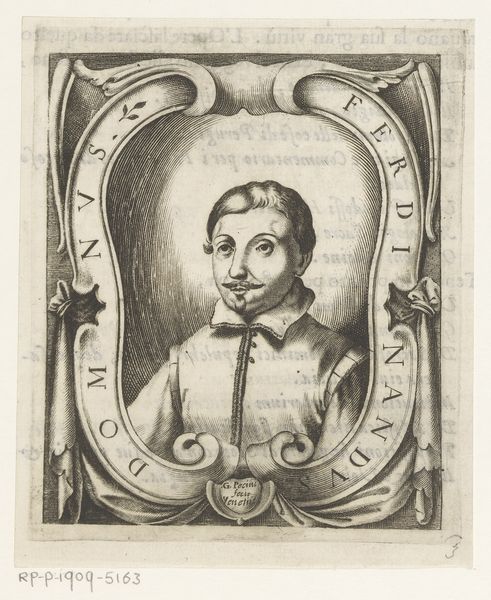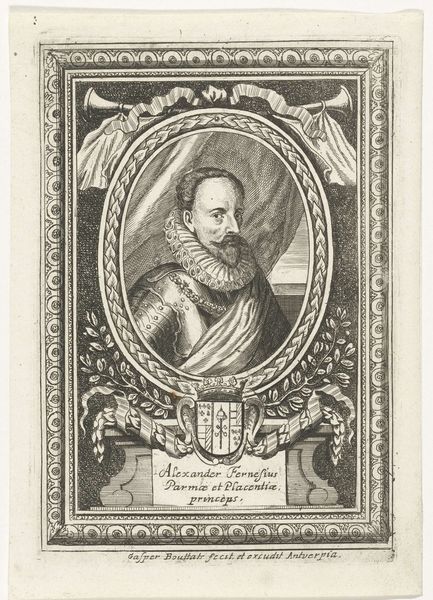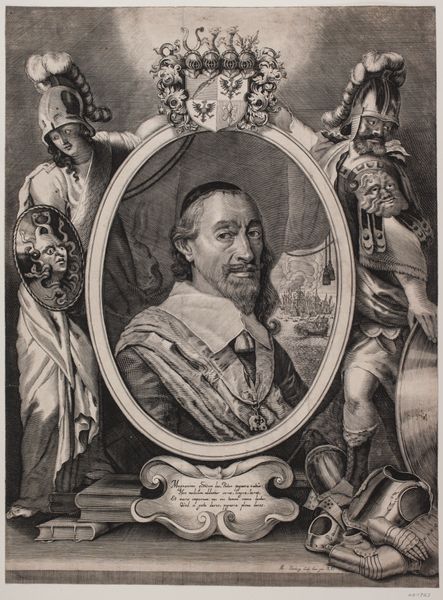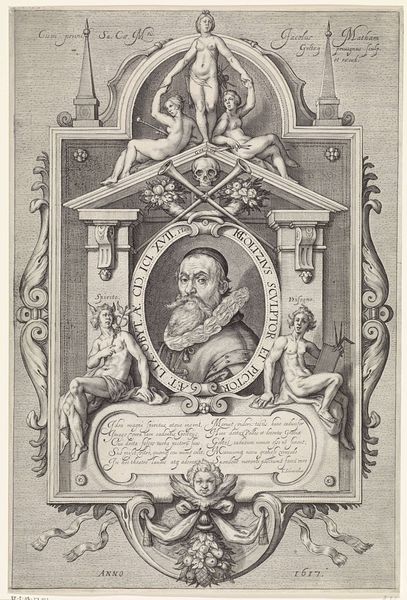
print, engraving
#
portrait
#
baroque
# print
#
caricature
#
history-painting
#
engraving
Dimensions: height 180 mm, width 125 mm
Copyright: Rijks Museum: Open Domain
Curator: Allow me to introduce a remarkable portrait: "Portret van Giovanni Battista Zeccadoro" by Giovanni Battista Coriolano, dating from somewhere between 1599 and 1649. The work is an engraving. Editor: Immediately striking is the framing. The artist uses these figures, atlantes holding up the weight, with a central oval framing a figure and an odd crest supported by cupids. Very Baroque in its dynamism. Curator: Precisely. Consider how the composition, a vertical rectangle, is subtly subdivided. The titular figure occupies the visual center, drawing our attention first, his vestments suggesting ecclesiastical office. But above him sits the crest, and all is framed by powerful but stooped classical forms on either side. Editor: Right, the hierarchy of power and social structures rendered in visual form. One must also think about the choice of engraving as a reproductive medium. This was meant for wide distribution; consider who has the means of production and dissemination during this period. What are they intending the common man to think of this ecclesiast? Curator: The precision and detail achievable through engraving are noteworthy, offering a clarity that other printmaking techniques might lack. Look closely at the man's face. Despite the limitations of the medium, Coriolano captures Zeccadoro's countenance with remarkable nuance. Semiotics help me unravel his character. Editor: That’s assuming a purely representational purpose. However, how can we ignore the inherent political charge behind image production in early modern Europe? An interesting power struggle emerges in this seemingly reverential depiction, particularly how the artist positions Zeccadoro within structures of religious and political authority. Also I question the choice to depict him at age thirty in the Latin phrase. It indicates a calculated and strategic declaration about this religious man's presence. Curator: True enough. It certainly presents avenues for interesting intellectual speculation, beyond mere physiognomy. Considering that date then, this work really shows us more about artistic and religious power structures. Editor: Indeed, my appreciation deepens from this dialogue. The portrait unveils historical making beyond artistic intention, the dynamics involved.
Comments
No comments
Be the first to comment and join the conversation on the ultimate creative platform.
